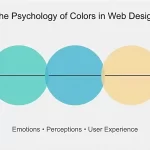The TL;DR for Chronically Rushed Readers:
-
Your brain isn’t a muscle, but it sure likes to flex
-
Conventional learning methods are so last century
-
Embrace the weird, win at learning
-
Time isn’t money, but attention definitely is
-
Failure is just success in disguise (and a great teacher)
-
Your comfort zone is where learning goes to die
-
Multisensory learning is like a party for your neurons
-
Sleep is nature’s cheat code for memory consolidation
Ever feel like your brain is running on Windows 95 while the world is zooming past on quantum computers? Fear not, fellow knowledge seekers! We’re about to embark on a wild ride through the jungle of unconventional learning hacks that’ll upgrade your mental operating system faster than you can say “neural plasticity.” Buckle up, because things are about to get weird (and wonderfully effective)!
1. The Pomodoro Technique on Steroids: Time-Boxing for the Win
Forget the humble tomato timer. We’re going full-on MMA with our time management. Enter the ring with the “Pomodoro Punch-Out.”
How it works:
-
Set a timer for 25 minutes (one “round”)
-
Study like your life depends on it
-
When the bell rings, take a 5-minute breather
-
Repeat for 4 rounds
-
After 4 rounds, treat yourself to a 15-minute “victory lap”
Why it works: This technique capitalizes on your brain’s natural attention span cycles, keeping you focused and energized. Plus, the boxing metaphor makes you feel like Rocky Balboa of learning. Cue the training montage!
Pro Tips:
-
Use different “weight classes” for different tasks. Heavy-hitting subjects might need 30-minute rounds, while lighter topics can stick to 20.
-
Create a pre-fight ritual to get in the zone. Maybe it’s putting on your “study gloves” or doing a quick shadow-boxing session with your textbook.
Do’s and Don’ts:
-
DO: Stay hydrated between rounds. Your brain is thirsty for knowledge (and water).
-
DON’T: Check social media during breaks. That’s like inviting your opponent to sucker-punch you.
Use Case:
Sarah, a law student, used the Pomodoro Punch-Out to tackle her mountain of case studies. She went from overwhelmed to overachieving, knocking out her workload like a champion prizefighter.
2. The “Explain It Like I’m Five” Challenge
Channel your inner kindergartener and break down complex topics into bite-sized, crayon-friendly chunks.
Steps to ELI5 mastery:
-
Pick a topic you’re struggling with
-
Imagine explaining it to a precocious 5-year-old
-
Use analogies, metaphors, and stick figure drawings if necessary
-
If you can’t explain it simply, you don’t understand it well enough
Pro tip: Record yourself explaining the concept. Play it back and cringe at how much you sound like a confused adult. Then, refine your explanation until a real 5-year-old could grasp it (or at least pretend to while plotting world domination).
Advanced ELI5 Techniques:
-
The Lego Method: Break down complex ideas into simple building blocks, then show how they fit together.
-
The Superhero Analogy: Relate abstract concepts to superhero powers or origin stories.
-
The Food Comparison: Explain things in terms of cooking or favorite snacks. (e.g., “The water cycle is like making soup…”)
Do’s and Don’ts:
-
DO: Embrace silly analogies. The weirder, the more memorable.
-
DON’T: Use jargon or technical terms. If a kindergartener wouldn’t know it, ditch it.
Use Case:
Tom, a computer science major, used ELI5 to explain algorithms to his little sister using her stuffed animals. Not only did she grasp the basics, but Tom’s understanding skyrocketed.
3. The “Teach Your Pet” Technique
Who says Fido can’t be your study buddy? Explaining concepts to your furry (or scaly) friend can work wonders for your understanding.
Why it works:
-
Forces you to vocalize and organize your thoughts
-
Provides a non-judgmental audience (unless you have a particularly snooty cat)
-
Helps identify gaps in your knowledge when your pet gives you that “Are you serious?” look
Bonus: If your pet actually learns something, you might have the next viral sensation on your hands. #GeniusDoggo
Pet-Friendly Learning Hacks:
-
The Treat Trail: Create a path of treats that follows the flow of your explanation. As you move through the concept, your pet follows along.
-
The Toy Demo: Use your pet’s toys to represent different elements of what you’re learning.
-
The Command Connection: Teach your pet a new trick while explaining a new concept to yourself. Associate the two for better recall.
Do’s and Don’ts:
-
DO: Use an enthusiastic, positive tone. Your pet (and your brain) will respond better.
-
DON’T: Get frustrated if your pet loses interest. Take it as a sign to make your explanation more engaging.
Use Case:
Lisa, studying for her biology exam, explained photosynthesis to her goldfish using colorful pebbles in the tank. Her fishy friend may not have aced the test, but Lisa sure did!
4. The “Netflix and Skill” Method
Turn your binge-watching habit into a learning superpower. Pick a skill you want to master, then only allow yourself to watch your favorite shows while practicing that skill.
Example:
-
Learning to code? Only watch “Stranger Things” while working on your Python projects
-
Studying a new language? Watch “Money Heist” in its original Spanish with subtitles
Before you know it, you’ll be associating “one more episode” with “one more lesson.” Talk about positive reinforcement!
Binge-Learning Boosters:
-
The Character Challenge: Create a learning task inspired by each main character in the show.
-
The Plot Twist Drill: Every time there’s a major plot twist, switch to a different aspect of what you’re learning.
-
The Commercial Break Sprint: If you’re watching something with ads, use those breaks for intense study sprints.
Do’s and Don’ts:
-
DO: Choose shows that somewhat relate to what you’re learning for added context.
-
DON’T: Pick a show that’s so engrossing you forget to actually study.
Use Case:
Mike, an aspiring chef, watched cooking shows while practicing knife skills. He became a master of julienning vegetables faster than you can say “Chopped champion.”
5. The “Failure Fiesta” Approach
Embrace your inner screw-up and throw a party for your mistakes. Every time you fail at something, celebrate it like you’ve just won the lottery.
How to throw a Failure Fiesta:
-
Identify what went wrong
-
Figure out why it happened
-
Brainstorm how to avoid it next time
-
Do a ridiculous victory dance
Why it works: By reframing failure as a learning opportunity, you remove the fear and stigma associated with making mistakes. Plus, your neighbors will think you’re either incredibly successful or slightly unhinged. Win-win!
Failure Fiesta Favors:
-
The Blooper Reel: Keep a journal of your most epic fails. Review it regularly for laughs and lessons.
-
The Mistake Piñata: Write your errors on slips of paper, stuff them in a piñata, and whack away. Learning from mistakes has never been so cathartic!
-
The Flop Trophy: Create a ridiculous award for your biggest blunder of the week. Display it proudly.
Do’s and Don’ts:
-
DO: Share your failures with others. It normalizes the learning process and might help someone else.
-
DON’T: Dwell on mistakes. Celebrate, learn, and move on.
Use Case:
Alex, learning to play guitar, threw a mini-party every time he hit a wrong chord. His neighbors were confused, but his progress was undeniable.
6. The “Skill Stacking Sundae” Strategy
Instead of trying to master one skill at a time, create a delicious learning sundae by combining complementary skills.
Example Sundae:
-
Base: Public speaking
-
Scoop 1: Improvisational comedy
-
Scoop 2: Basic psychology
-
Topping: Data visualization
-
Cherry on top: Storytelling techniques
Suddenly, you’re not just a public speaker – you’re a charismatic, quick-witted presenter who can read a room, present data engagingly, and weave it all into a compelling narrative. Yum!
Skill Sundae Recipes:
-
The Tech Titan: Programming + Design + Project Management + Business Communication
-
The Content Creator Supreme: Writing + Photography + Video Editing + Social Media Marketing
-
The Fitness Guru Deluxe: Personal Training + Nutrition + Psychology + Social Media Influencing
Do’s and Don’ts:
-
DO: Look for unexpected skill combinations that could give you a unique edge.
-
DON’T: Try to stack too many skills at once. You’re building a sundae, not a 10-tier cake.
Use Case:
Emma combined her passion for environmental science with graphic design and public speaking. She’s now a sought-after presenter at eco-conferences, known for her visually stunning and engaging talks.
7. The “Mindfulness Mash-up” Technique
Combine mindfulness practices with your learning sessions for a double whammy of cognitive enhancement.
Try this:
-
Meditate for 10 minutes before studying
-
Practice deep breathing exercises during breaks
-
End your study session with a body scan relaxation technique
By integrating mindfulness into your learning routine, you’re not just cramming information – you’re cultivating a calm, focused mind that’s primed for knowledge absorption.
Mindful Learning Boosters:
-
The Sensory Study Session: Engage all five senses while learning. Light a scented candle, play soft background music, use textured notecards, etc.
-
The Gratitude Warm-up: Before studying, list three things you’re grateful for about the subject you’re learning.
-
The Visualization Cool-down: After studying, spend a few minutes visualizing yourself successfully applying what you’ve learned.
Do’s and Don’ts:
-
DO: Start small. Even a minute of mindfulness can make a difference.
-
DON’T: Get frustrated if your mind wanders. Noticing and refocusing is part of the practice.
Use Case:
Jake, a medical student, used mindfulness techniques to manage stress and improve his focus during long study sessions. His exam scores improved, and so did his overall well-being.
8. The “Gamification Gauntlet”
Turn your learning journey into an epic quest worthy of a fantasy RPG.
How to level up your life:
-
Create a character sheet for yourself
-
Assign skills and attributes based on your learning goals
-
Set “quests” (learning objectives) with XP rewards
-
Track your progress and level up as you complete quests
Bonus: Recruit friends to join your learning party. Nothing motivates like a little friendly competition and the fear of being the party’s “noob.”
Epic Learning Quests:
-
The Knowledge Dungeon: Each room represents a subtopic. Defeat the “boss” (a tough problem) to move to the next level.
-
The Skill Tree of Wisdom: Visualize your learning progress as a growing tree, with branches representing different skill areas.
-
The Achievement Hunter: Create badges or trophies for different learning milestones. Display them proudly!
Do’s and Don’ts:
-
DO: Make the rewards meaningful. Maybe at level 10, you treat yourself to that gadget you’ve been eyeing.
-
DON’T: Get so caught up in the game that you forget the real goal is learning.
Use Case:
A group of friends learning Spanish created a “Language Lords” game, complete with character classes (Grammar Warrior, Vocabulary Mage, etc.) and weekly “raids” (group conversations). Their progress? Legendary.
9. The “Memory Palace Makeover”
Transform your mind into a luxurious estate where information lives in style.
Building Your Palace:
-
Visualize a familiar place (your home, favorite museum, etc.)
-
Create vivid, outrageous images for the information you want to remember
-
Place these images at specific locations in your mental palace
-
To recall, simply take a mental stroll through your palace
Palatial Learning Hacks:
-
The Celebrity Wing: Assign famous people to represent different concepts. The wackier the connection, the better!
-
The Absurdity Annex: Create a room where the most difficult-to-remember facts live in ridiculous scenarios.
-
The Timeline Terrace: Design a garden where historical events grow as plants or trees.
Do’s and Don’ts:
-
DO: Make your images as vivid and bizarre as possible. Boring doesn’t stick.
-
DON’T: Overcrowd your palace. Give each piece of information its own space to shine.
Use Case:
Clara, studying art history, created a memory palace where different rooms represented art periods. The Renaissance room featured a bodybuilding Mona Lisa lifting weights made of paint tubes. Weird? Yes. Effective? Absolutely.
10. The “Physical Flashback” Technique
Harness the power of muscle memory to boost your brain power.
How it works:
-
Assign physical movements to key concepts or facts
-
Practice these movements while reviewing the information
-
When you need to recall, perform the movement to trigger the memory
Kinetic Knowledge Boosters:
-
The Vocabulary Dance: Create specific moves for new words or phrases you’re learning.
-
The Math Mime: Use hand gestures to represent different mathematical operations or formulas.
-
The Historical Handshake: Develop a unique handshake for each historical figure or event you’re studying.
Do’s and Don’ts:
-
DO: Make the movements distinctive and tied to the meaning of what you’re learning.
-
DON’T: Choose movements so complex that you’re learning choreography instead of your subject matter.
Use Case:
Tom, studying for his driving test, associated different hand movements with traffic rules. During the test, subtle finger taps helped him recall the right answers.
Conclusion: Embrace the Weird, Master the World
Learning doesn’t have to be a slog through endless textbooks and mind-numbing lectures. By embracing these unconventional techniques, you’re not just studying – you’re revolutionizing the way your brain processes and retains information.
Remember, the most powerful learning tool you have is your uniquely weird and wonderful brain. So go forth, experiment with these hacks, and create your own. Who knows? Your bizarre learning method might just be the next big thing in educational psychology.
Now, if you’ll excuse me, I have a date with my cat, a Spanish telenovela, and a JavaScript tutorial. ¡Hasta la vista, baby! (See? The Netflix and Skill method is already working!)
Relevant Reads:
-
The Procrastinator’s Paradise: Turning Last-Minute Panic into Productive Power
-
Mind Palace Makeover: Upgrading Your Memory from Studio Apartment to Versailles
-
The Introvert’s Guide to Networking: How to Win Friends and Influence People (Without Leaving Your House)









